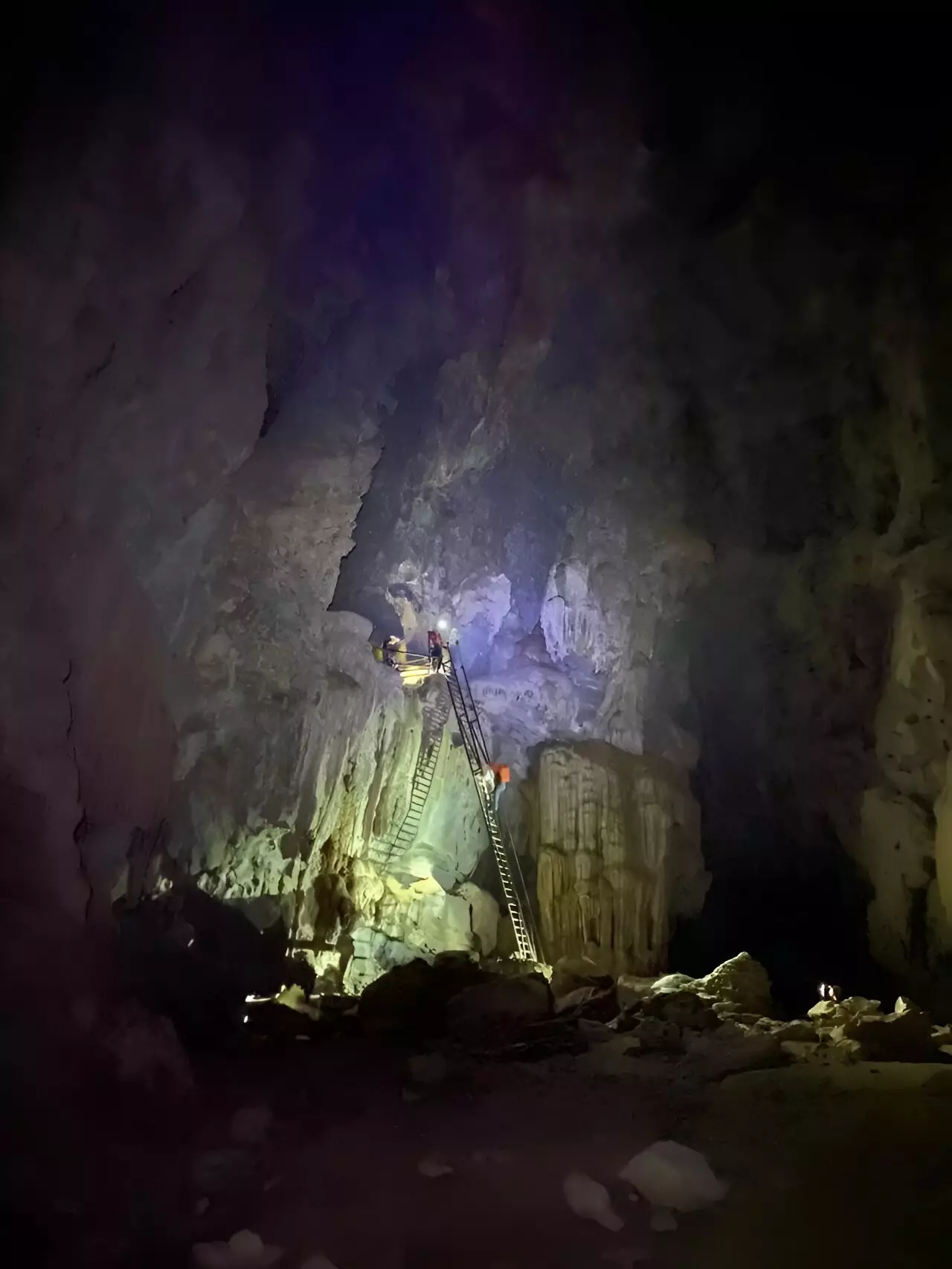For centuries, the phenomenon of winter monsoons has plagued scientists and meteorologists with its unpredictability. While we have gained a significant understanding of summer monsoons, winter monsoons have remained a mystery, especially during periods where no weather station data was available. These heavy autumn and winter rainfalls are notorious for causing floods and landslides across Southeast Asia, posing a threat to agriculture, water resources, and the global food trade. However, a groundbreaking discovery has shed light on this enigmatic weather pattern.
Researchers at Northumbria University, led by PhD student Annabel Wolf and supported by Dr. Vasile Ersek, have made a remarkable breakthrough in deciphering the secrets of winter monsoons. By analyzing an 8,000-year-old stalagmite from a cave in central Vietnam, they have been able to extract valuable information about changes in seasonal rainfall patterns over thousands of years. This stalagmite holds the key to understanding the evolution of monsoons in Southeast Asia.
One of the key findings of the study is the ability to distinguish between rainfall caused by local weather conditions and rainfall resulting from wider regional systems. This differentiation is crucial in understanding the complex dynamics of winter monsoons. The researchers discovered a contradictory relationship between winter and summer monsoons driven by insolation in the northern hemisphere at a regional level. However, at a local level, they found a strong connection between summer and winter monsoons.
The breakthrough in understanding the local and regional components of monsoon rainfall promises a new era of climate modeling for Southeast Asia. Historically, climate models have underestimated winter monsoon rainfall by as much as 50%, leading to considerable uncertainty in future climate projections. However, with the newfound understanding of the intricate relationship between summer and winter monsoons, scientists can refine their models and make more accurate predictions about future weather patterns in the region.
The discoveries made by Wolf and her team open the door to further research and exploration of ancient climate records across Southeast Asia. By examining stalagmites and other natural archives in different regions, scientists can extract invaluable data on local and regional rainfall levels throughout history. This will provide a much greater understanding of how weather patterns have evolved over time and how they may continue to change in the future.
The mysteries of winter monsoons have finally been unraveled, thanks to the groundbreaking research conducted by the team at Northumbria University. Their ability to differentiate between local and regional rainfall has provided a critical tool for refining our understanding of historical climate patterns. As we continue to study and analyze ancient climate records, we can make strides towards more accurate climate modeling and predictions for Southeast Asia. This newfound knowledge will not only benefit the regional economy and food trade but also contribute to the global understanding of climate change and its impact on vulnerable regions.


Leave a Reply